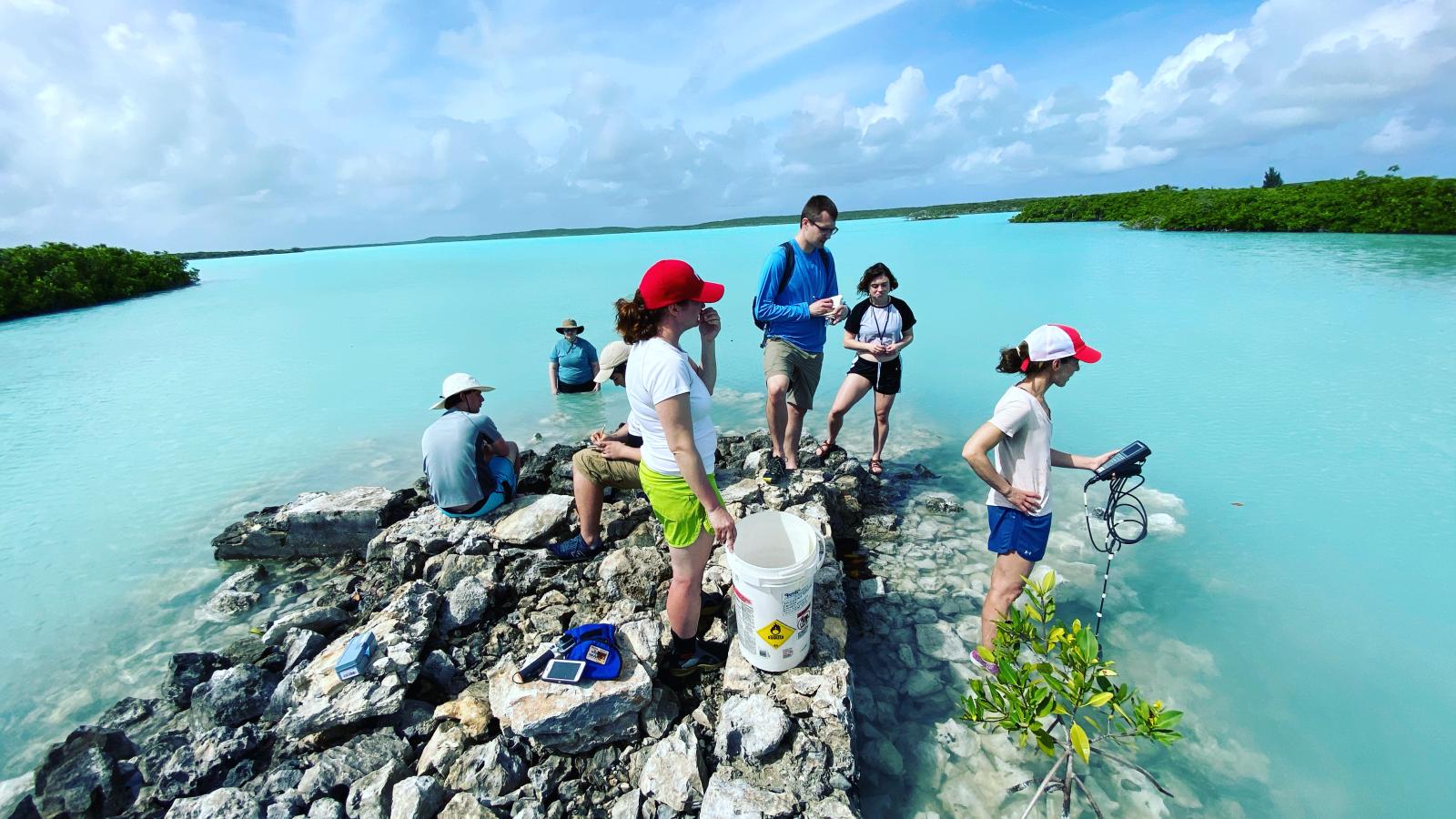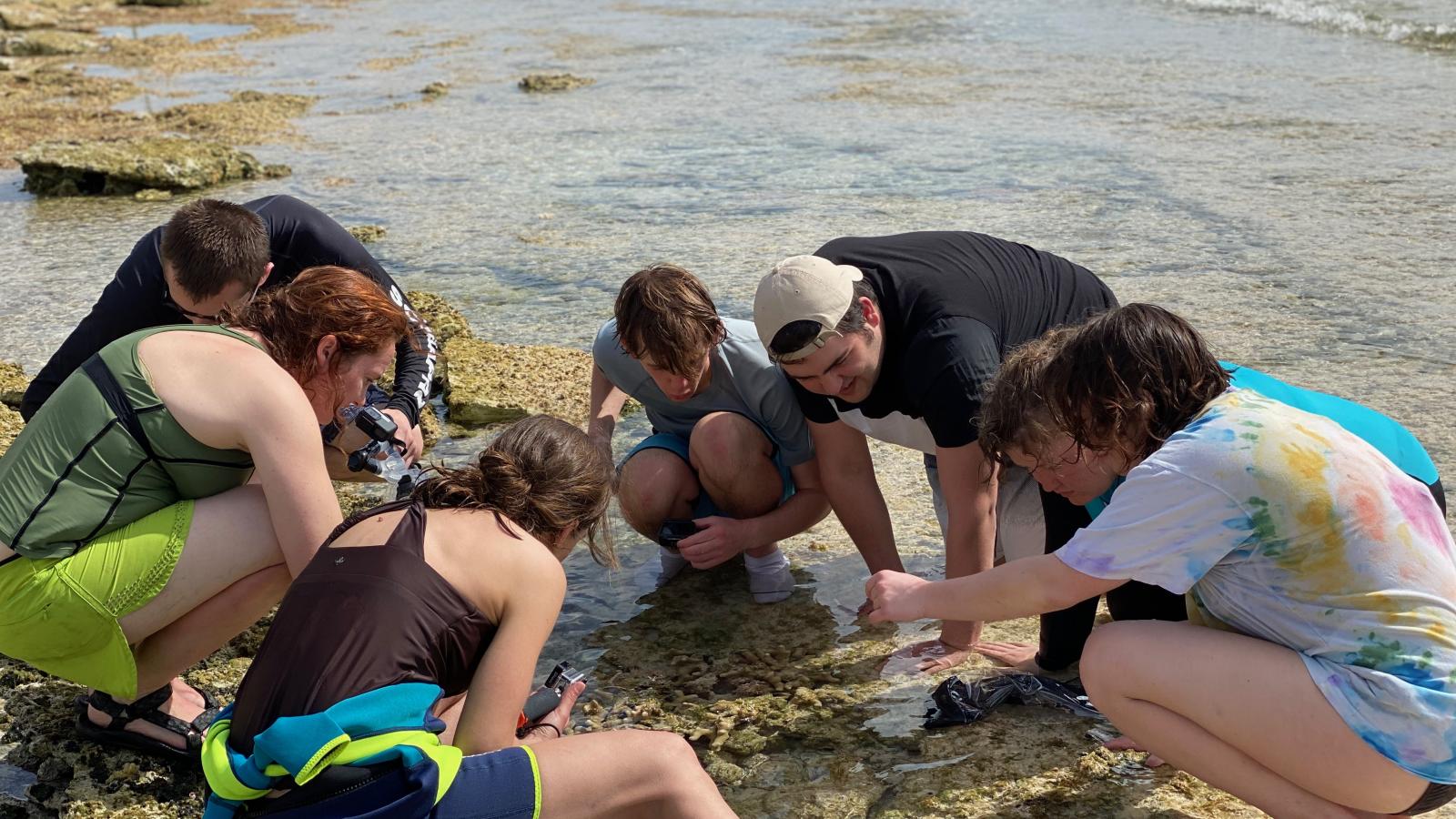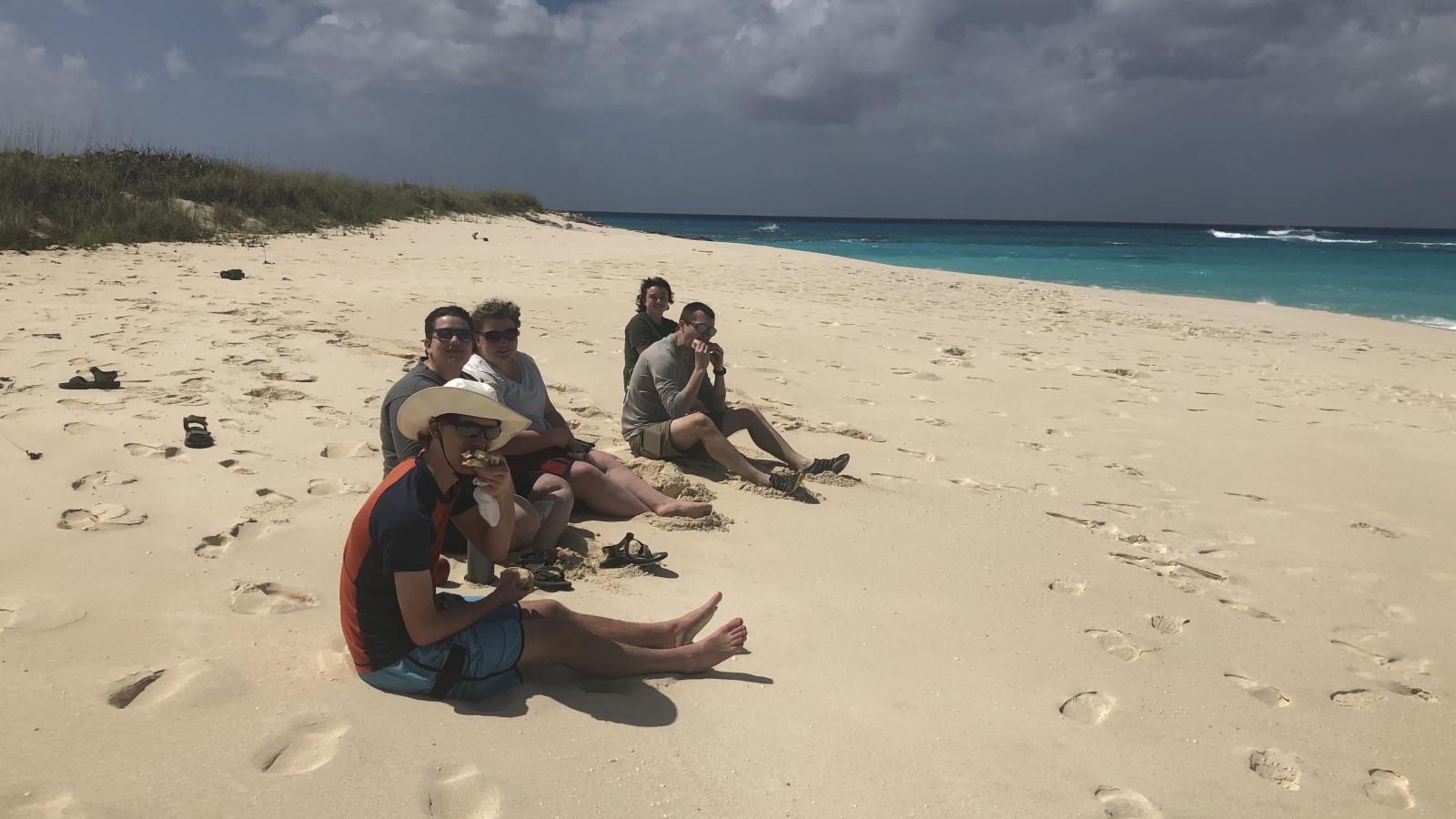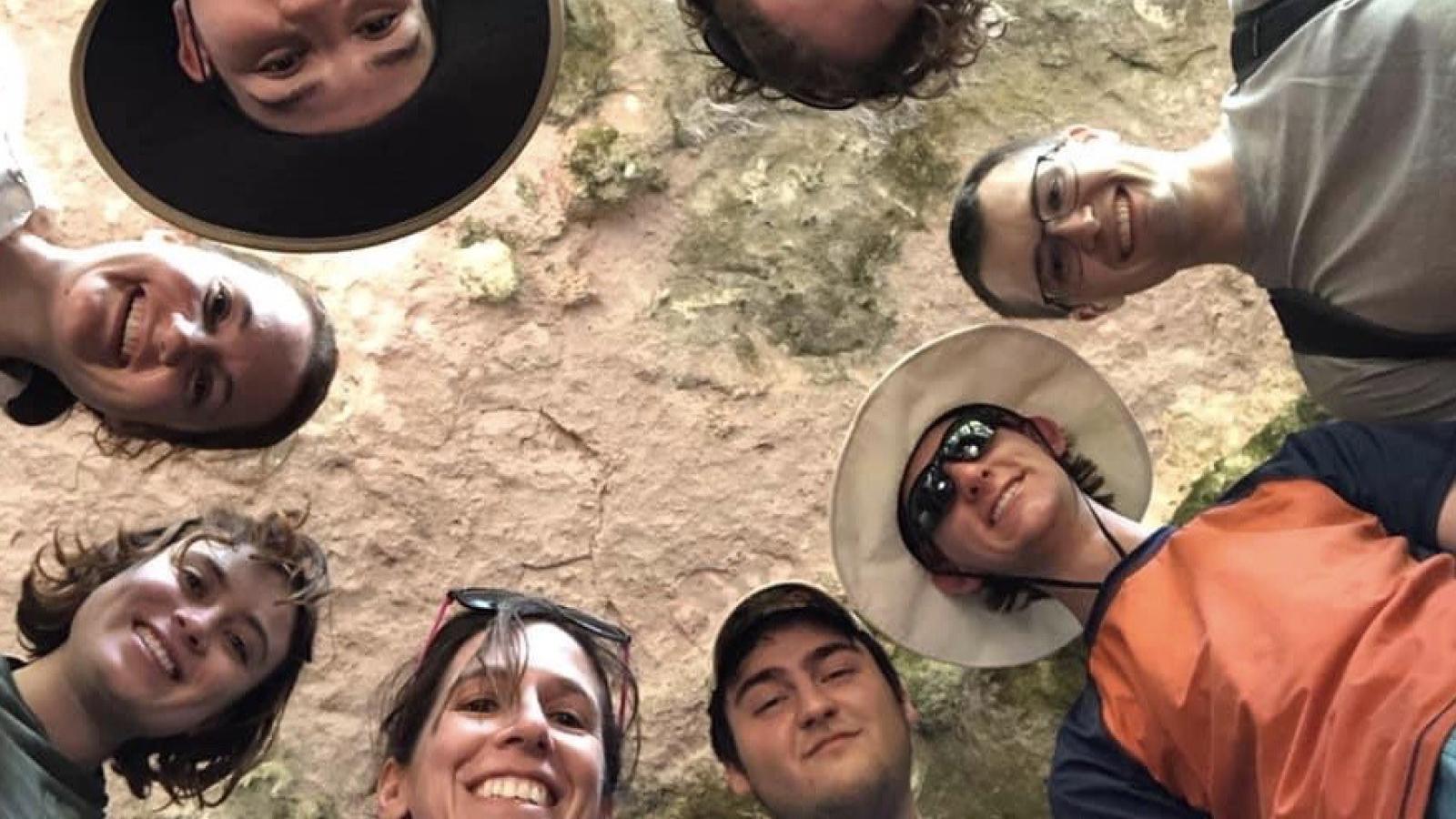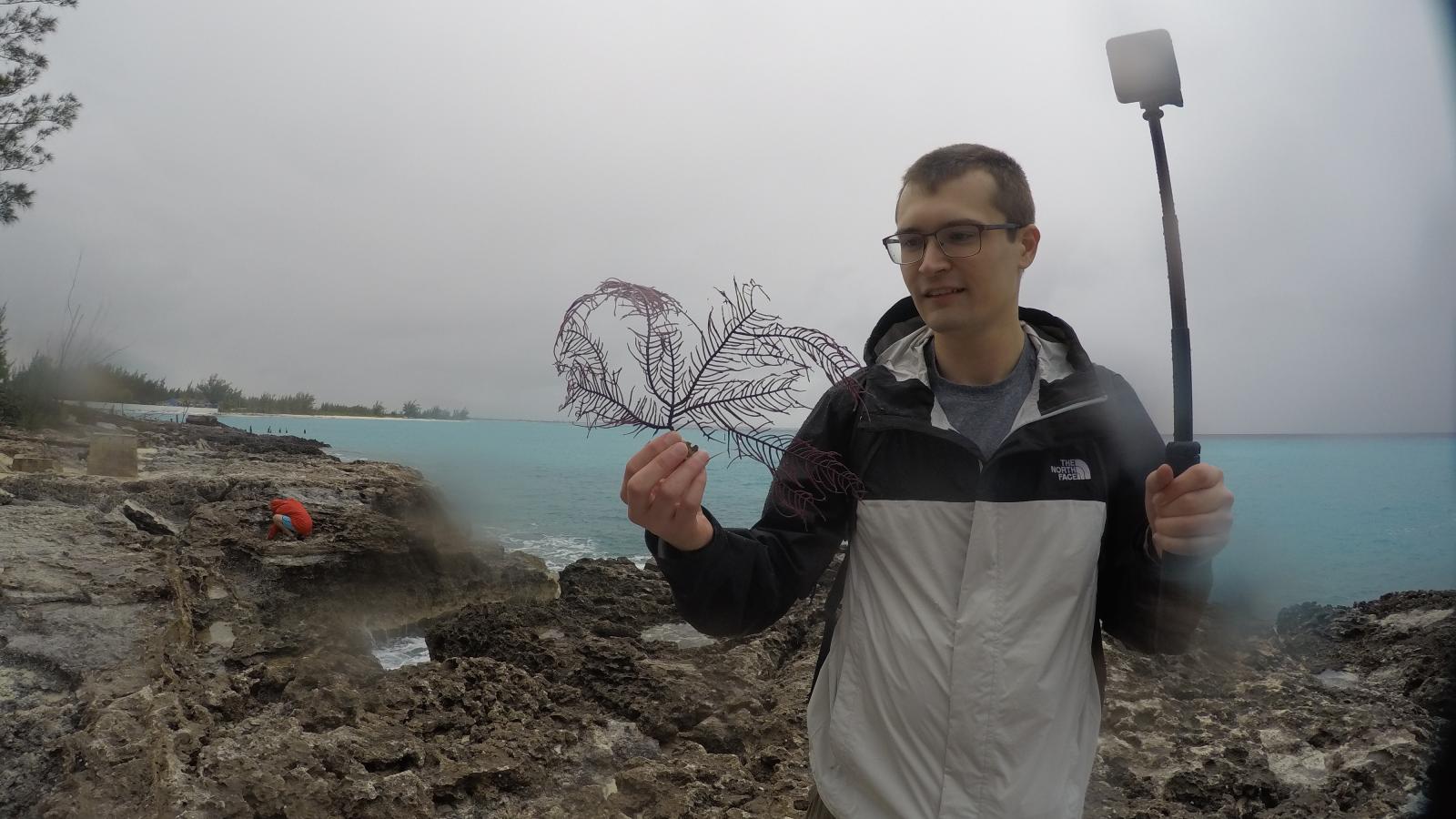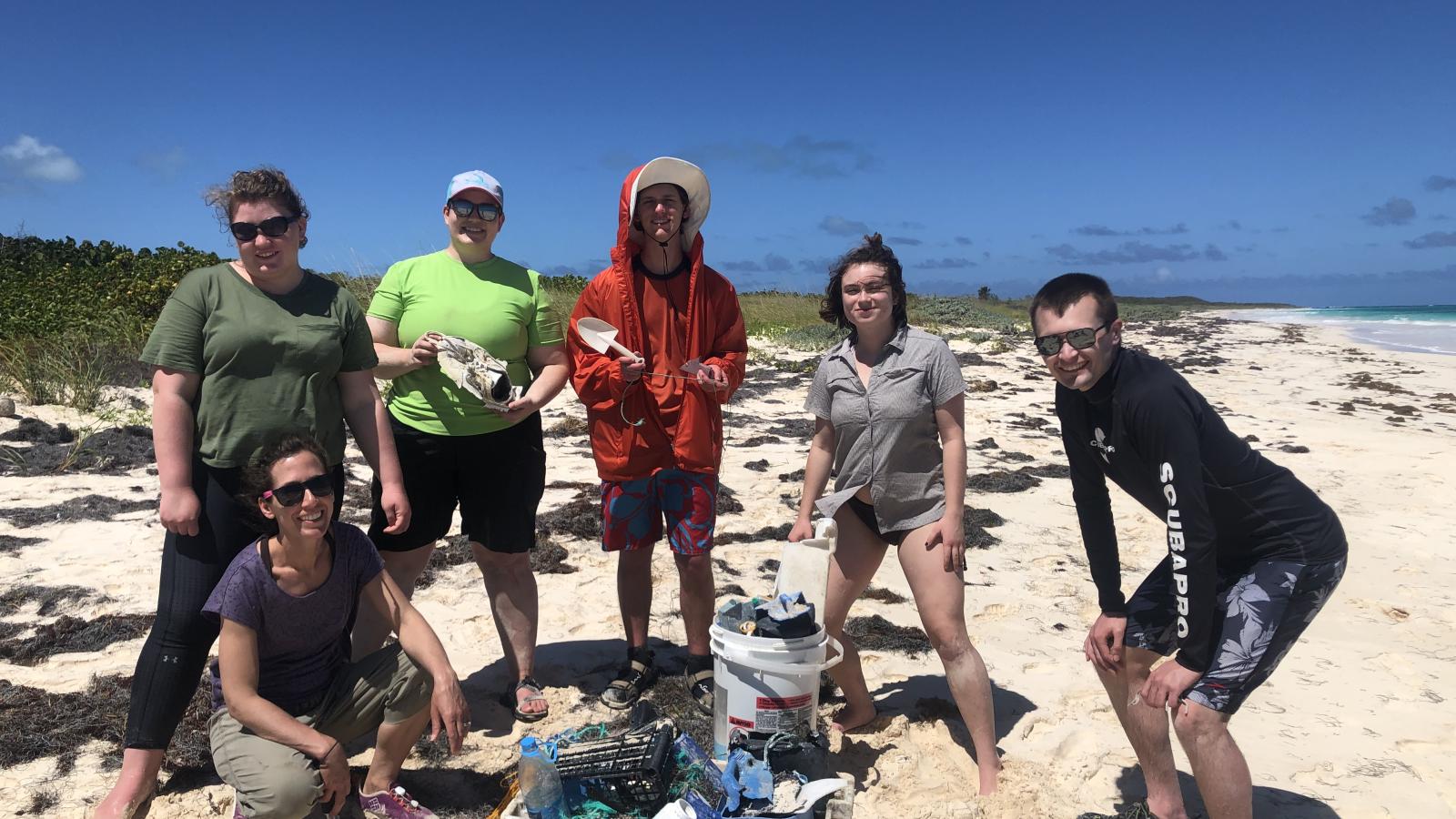Geology of The Bahamas and Carbonate Field Studies
During Spring Break (March 7-15, 2020), Dr. Elizabeth Griffith and Dr. Jill Leonard-Pingel led a field trip of SES students to San Salvador Island, The Bahamas. The week-long trip was based at the University of The Bahamas’ Gerace Research Centre and featured visits to classic locations including the Cockburn Town Fossil Reef, Watling's Blue Hole, Storr’s Lake, Lighthouse Cave, and various living coral reefs around the island. This recently updated field course was designed to provide an introduction to modern carbonate depositional environments, sedimentation and diagenesis, and carbonate island hydrogeology using San Salvador Island, The Bahamas, as a microcosm of these environments around the world.
Prior to the field trip, the group met to discuss logistics and practice using snorkel gear. Students chose a topic related to planned fieldwork on San Salvador (e.g., reef organisms, lake geochemistry, karst formation, Pleistocene climate, carbonate rocks, and petroleum reservoirs) and prepared a 20-minute presentation which they shared during the trip. During the day, the group visited field localities where they made observations and collected data. In the evening, students presented their research topics and examined samples collected at each field site. Students are currently working on their final assignment which aims to have them share their unique international field experience with a broader audience, such as a video blog, photo journal, or outreach activity. Class participants included: SES graduate students Casey Saup and Prescott Vayda; SES undergraduates Evan Cohen, Lily Kleban, and Ljubomir Risteski.
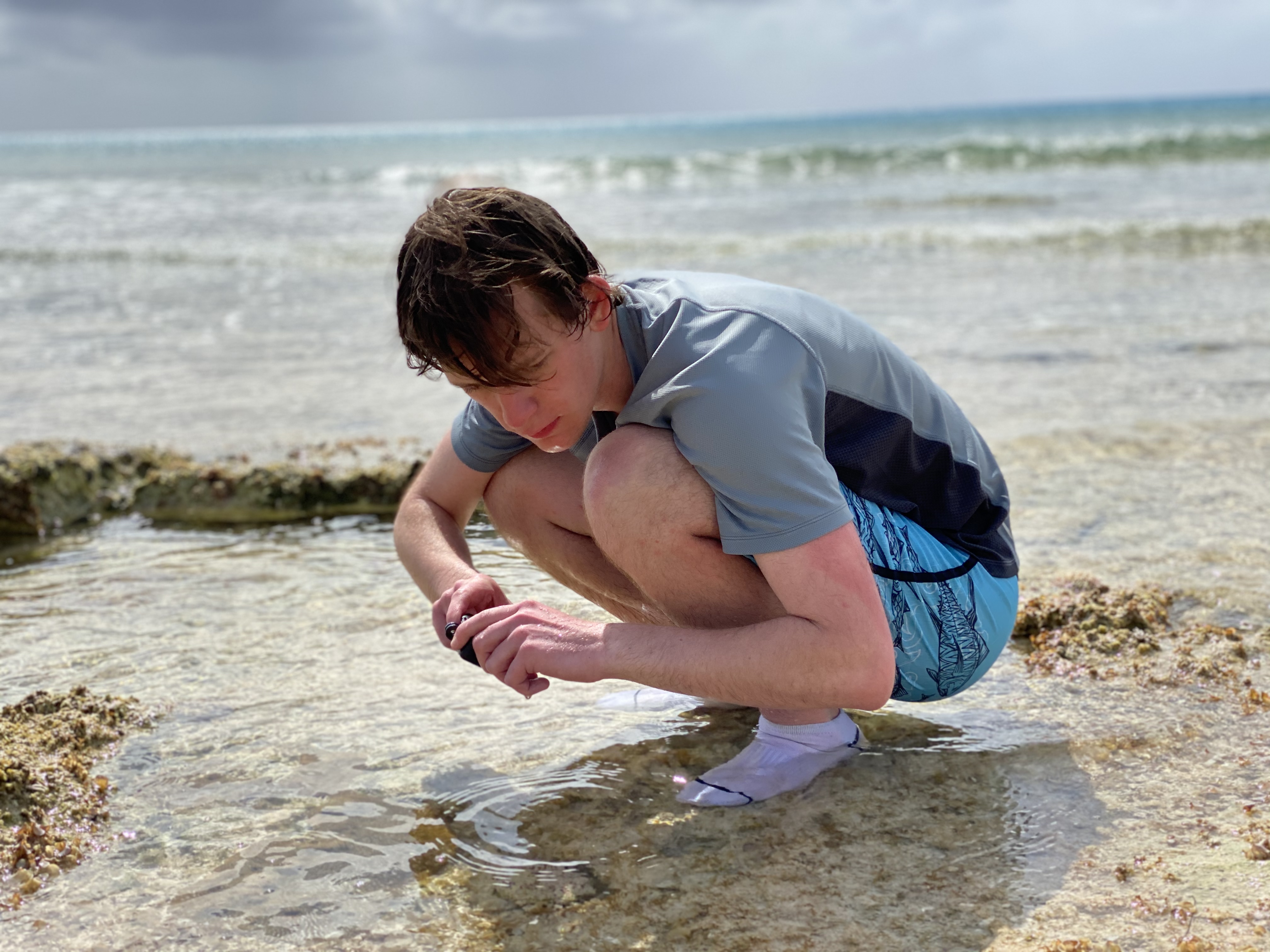
“San Salvador Island was a beautiful study abroad location. It was really crazy flying into San Salvador Island–there were inland bodies of water everywhere and they were all different colors. The first night I was there I was worried about the inclement weather putting a stop to our activities, but even though it was raining and windy beyond belief, we were working out in the field. Me being a freshman and already working in the field really shows that the School of Earth Sciences at OSU cares about their students’ education and college experience. On one of the days that we went snorkeling, we swam out a few hundred feet to a coral reef where we encountered sharks, barracudas, lots of corals, and many other interesting sea creatures. I think I am speaking for all of us when I say I had a great time the entire time we were together. I couldn’t have asked for a better group of people to go with.”
–Evan Cohen, freshman
“I’m so glad I got to experience this study abroad class. My favorite memory was the night snorkeling. It was an incredible, rare opportunity to be able to contrast diurnal and nocturnal reef fauna and to relate the differences between these modern animals to those we observed in the fossil reef. I also loved hiking out to Green Cay to visit the iguanas in their natural habitat! Future SES students should seriously consider taking this course, it’s an excellent opportunity to learn about the intersection between the biosphere and the geosphere in a beautiful location!”
–Lily Kleban, senior
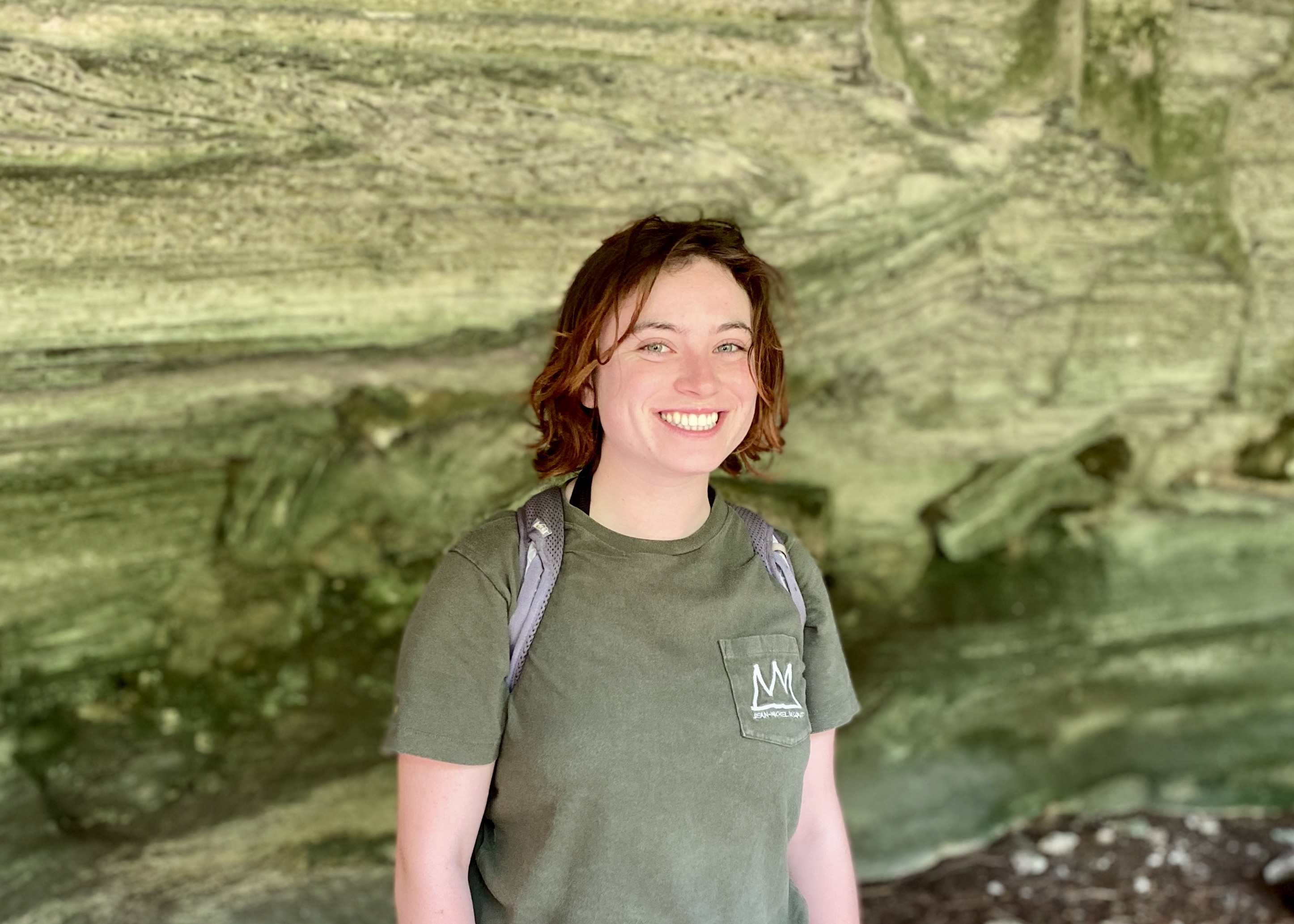
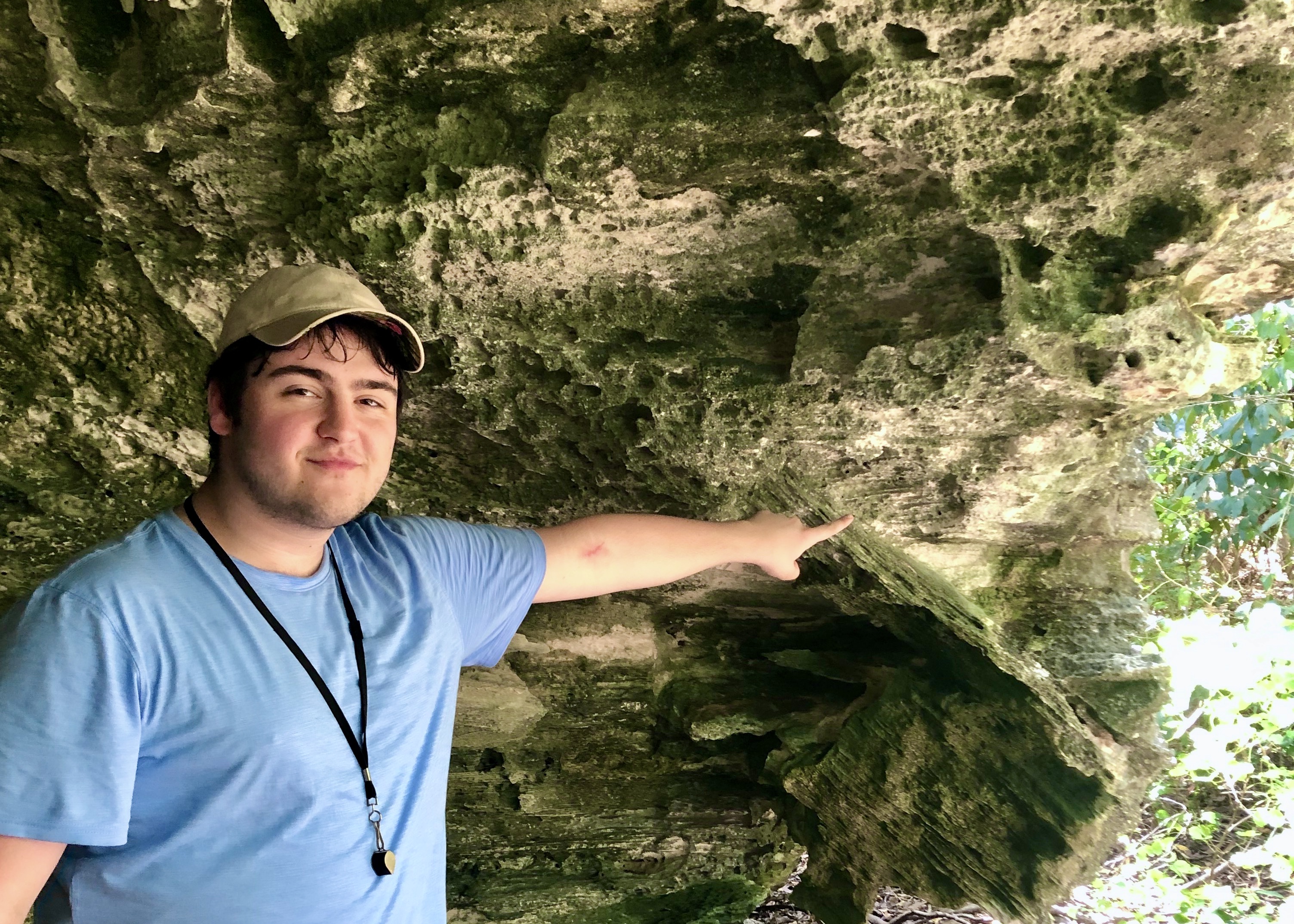
“It is no secret that I love caves. They’ve always fascinated me in the same way a fantasy book does because of their other-worldly nature, inherent mystery, and gothic beauty. Becoming a geoscience major was apropos for me with my own love of the discipline, and cave geology was a great bonus for me since I’m so enamored by them. I am ever grateful to Dr. Griffith and Dr. Leonard-Pingel for not only putting together this course again but also for making karst such a large part of the course content. With their guidance in the field and the support of both the School of Earth Science and its alumni, I was able to experience something so rare and unique that it was on my bucket list (admittedly a list full of unique experiences). Swimming through (and then properly spelunking) Lighthouse Cave was indescribable. I can’t possibly bring justice to it... Writing this after our trip, I’m left with nothing but fond memories of my swim through Lighthouse Cave, but this was such a unique experience that no picture or video could ever do it justice. I could not have gone on this trip without the help of SES and their alumni; this experience gave me memories that will last a lifetime.”
–LJ Risteski, senior
“I had been hoping this course would be offered again for years–I was so happy I was able to take it with Dr. Griffith and Dr. Leonard-Pingel whose multidisciplinary backgrounds provided us with unique insights into the entire biogeochemical picture of the island’s history and ongoing processes. This was an excellent opportunity to make first-hand observations of the processes we’ve inferred from the rock record in previous SES classroom- and field-based coursework.”
–Casey Saup, Ph.D. candidate
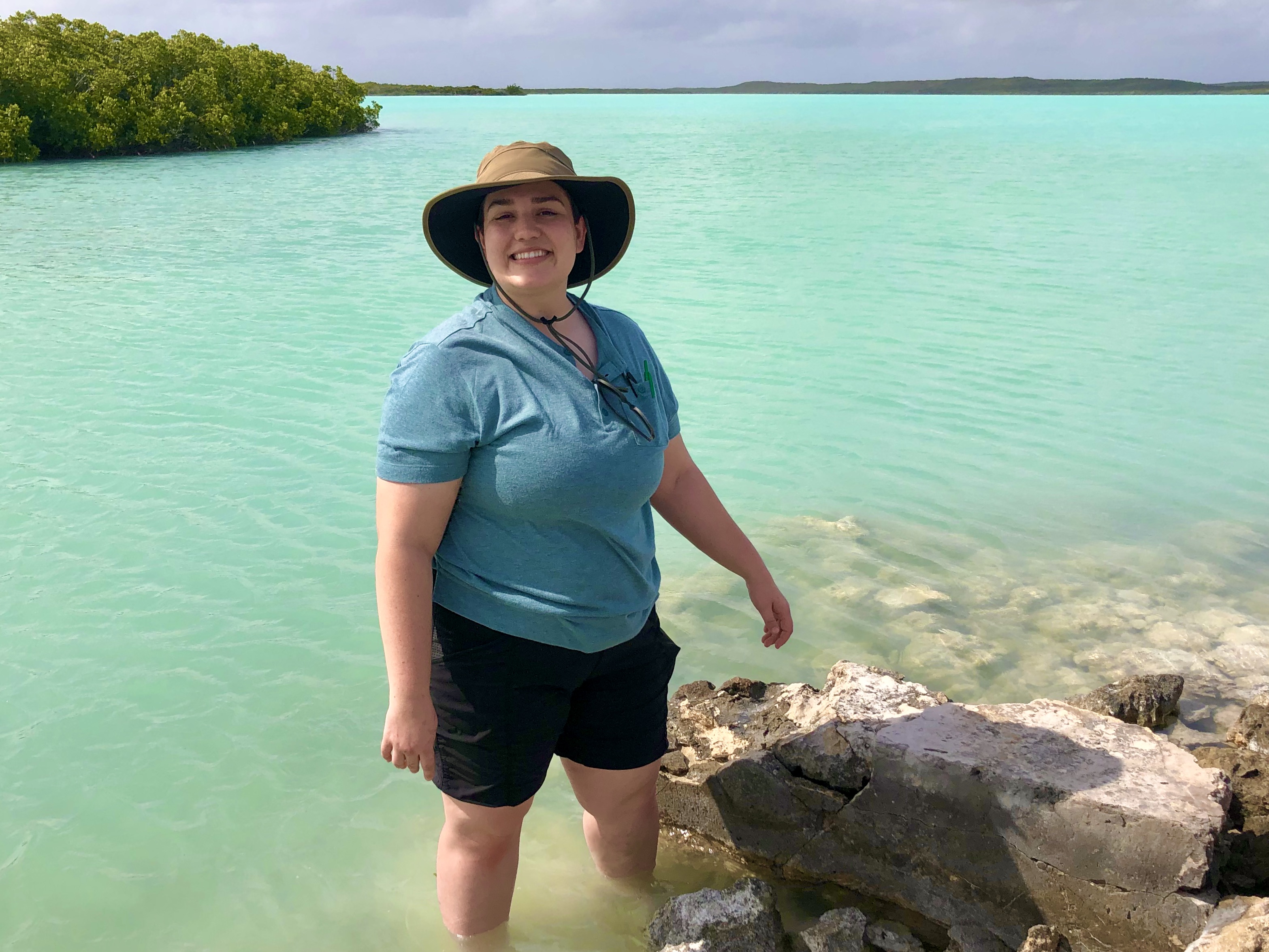
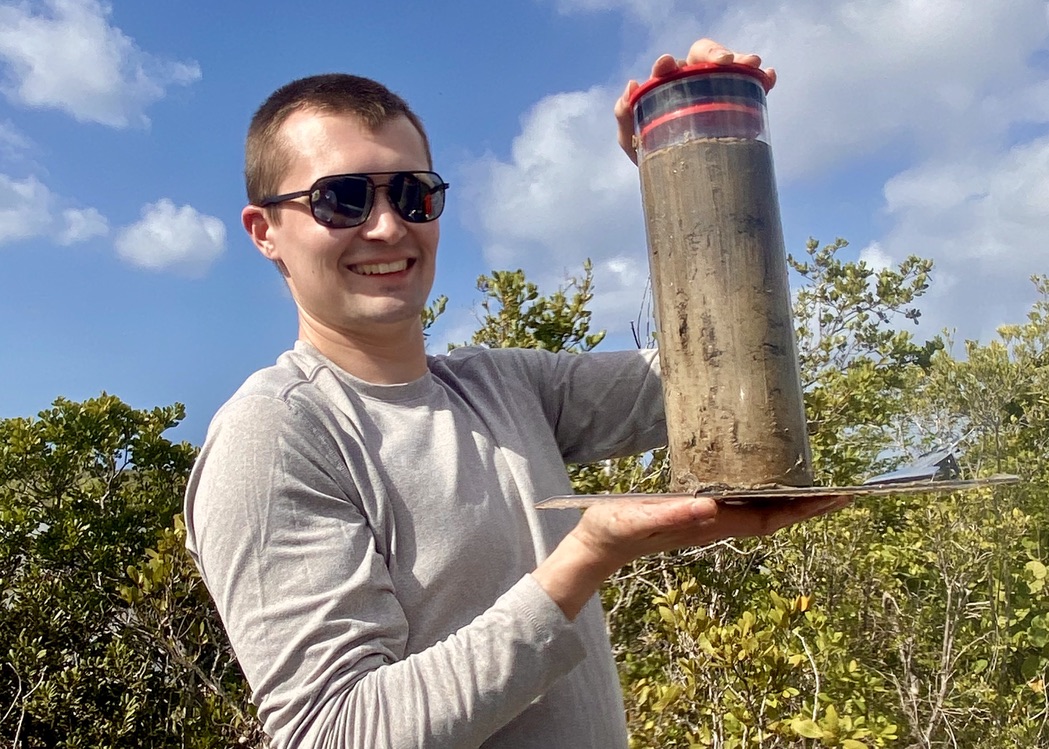
“Snorkeling through modern reefs and walking on top of fossil reefs all in the same week was an amazing experience. In a previous field trip to the Appalachian Basin, I got to see Devonian fossil reefs, so it was really cool to be able to compare that to the Pleistocene fossil reefs we saw in the Bahamas. While the reefs in these two times were made from different organisms (stromatoporoids vs corals) they had very similar structures. We also got to see a spectacular regression sequence in cross-section, including the best paleosol I have ever seen. The best part about this trip was that we got to study all this geology while simultaneously spending our spring break on the beach.”
–Prescott Vayda, MS student

